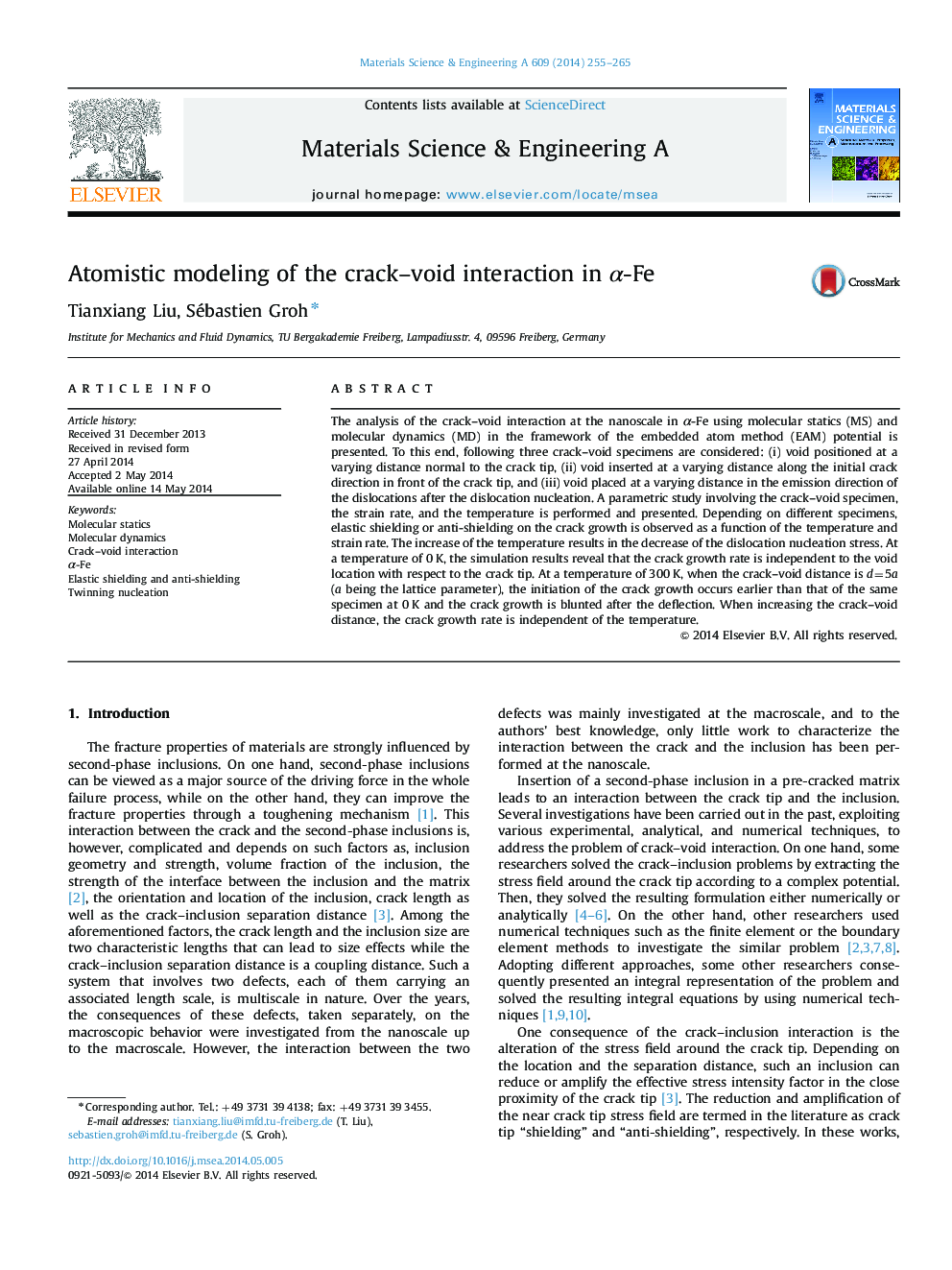| Article ID | Journal | Published Year | Pages | File Type |
|---|---|---|---|---|
| 1575157 | Materials Science and Engineering: A | 2014 | 11 Pages |
Abstract
The analysis of the crack-void interaction at the nanoscale in α-Fe using molecular statics (MS) and molecular dynamics (MD) in the framework of the embedded atom method (EAM) potential is presented. To this end, following three crack-void specimens are considered: (i) void positioned at a varying distance normal to the crack tip, (ii) void inserted at a varying distance along the initial crack direction in front of the crack tip, and (iii) void placed at a varying distance in the emission direction of the dislocations after the dislocation nucleation. A parametric study involving the crack-void specimen, the strain rate, and the temperature is performed and presented. Depending on different specimens, elastic shielding or anti-shielding on the crack growth is observed as a function of the temperature and strain rate. The increase of the temperature results in the decrease of the dislocation nucleation stress. At a temperature of 0 K, the simulation results reveal that the crack growth rate is independent to the void location with respect to the crack tip. At a temperature of 300 K, when the crack-void distance is d=5a (a being the lattice parameter), the initiation of the crack growth occurs earlier than that of the same specimen at 0 K and the crack growth is blunted after the deflection. When increasing the crack-void distance, the crack growth rate is independent of the temperature.
Related Topics
Physical Sciences and Engineering
Materials Science
Materials Science (General)
Authors
Tianxiang Liu, Sébastien Groh,
